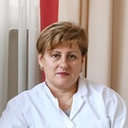Photochemoprotective effect of Calluna vulgaris extract on skin exposed to multiple doses of ultraviolet B in SKH-1 hairless mice.
Kľúčové slová
Abstrakt
UVB is a major cause of nonmelanoma skin cancer in humans. Photochemoprevention represents an important strategy in protecting the skin against the detrimental effects of ultraviolet B (UVB). We investigated the activity of Calluna vulgaris (Cv) delivered via a hydrogel on 3 main pathways (oxidative stress, inflammation, DNA damage) on skin exposed to multiple doses of UVB in SKH-1 mice. Fifty female mice were divided randomly into 5 groups: control, vehicle, UVB irradiated, Cv + UVB irradiated, and Cv + vehicle + UVB irradiated. The extract was applied topically on the skin in a dose of 4 mg polyphenols/cm2 30 minutes before each UVB (240 mJ/cm2) exposure over 10 consecutive days. Malondialdehyde, reduced glutathione, tumor necrosis factor-α, interleukin-6, cyclobutane pyrimidine dimer (CPD) levels, sunburn cell formation and epidermal thickness, and the number of epidermal cell layers in skin were evaluated 24 hours after the last treatment. UVB increased cytokine levels (P < 0.001), formation of CPDs (P < 0.001) and sunburn cells (P < 0.001), and the epidermal thickness and number of epidermal cell layers (P < 0.001) compared with the control group. The topical application of Cv protected the skin against inflammation and DNA damage, as shown by a decreased number of CPDs (P < 0.001) and sunburn cells (P < 0.001). The administration of Cv via hydrogel may be a viable method for chemoprevention..



